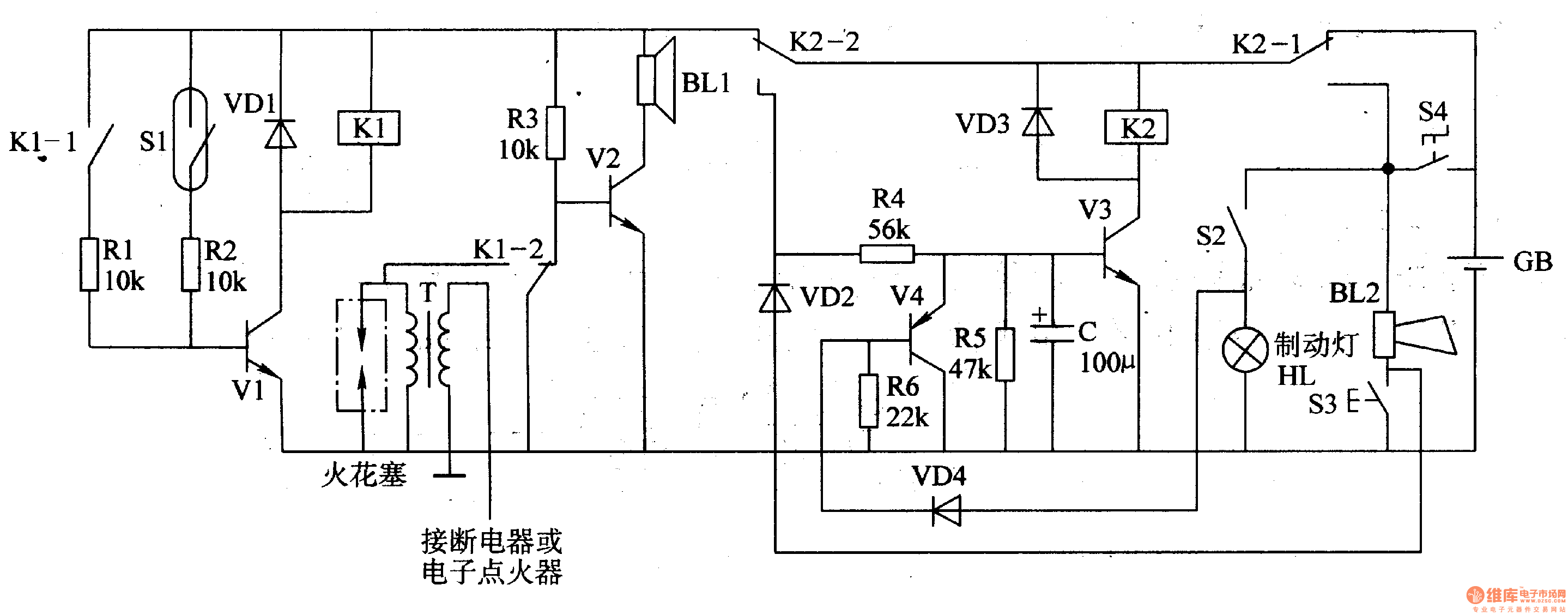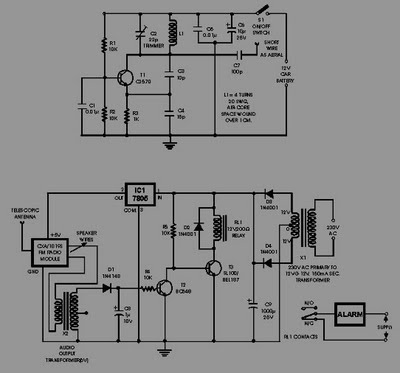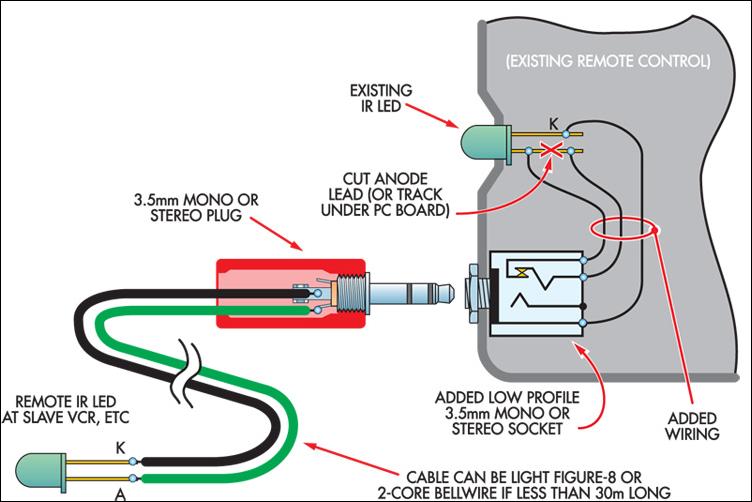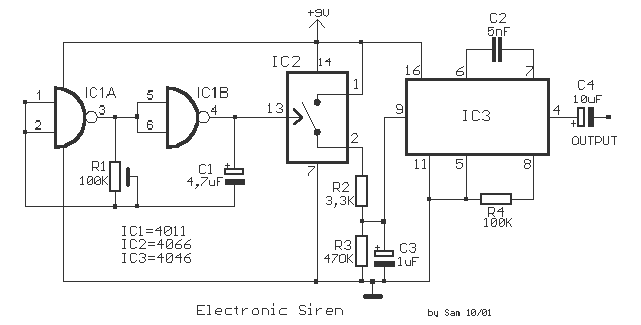
Siren alarm simulates star trek red alert
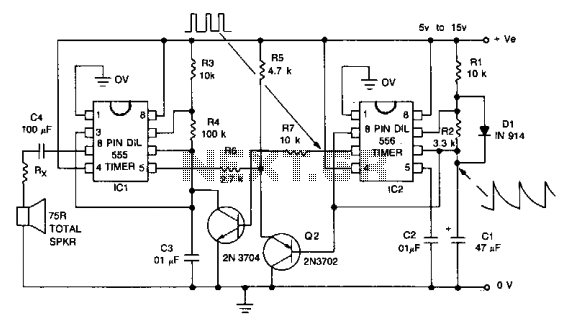
The signal begins at a low frequency, increases over a duration of approximately 1.15 seconds to a high frequency, pauses for about 0.35 seconds, and then resumes its ascent from a low frequency, continuing this pattern indefinitely.
The described signal can be implemented as a waveform generator circuit that produces a repeating frequency sweep, mimicking the auditory alert commonly associated with the Star Trek red alert. The circuit can be constructed using a combination of operational amplifiers, resistors, capacitors, and possibly a microcontroller for precise timing and frequency control.
The waveform generator can utilize a triangle or sawtooth waveform to achieve the gradual rise in frequency. The operational amplifier can be configured in a non-inverting mode to amplify the output signal to the desired level. Capacitors and resistors can be selected to define the time constants for the frequency ramp-up and the pause duration. For instance, a resistor-capacitor (RC) network can be designed to achieve the 1.15 seconds rise time by calculating the time constant \( \tau = R \times C \).
To implement the 0.35 seconds pause, a flip-flop or timer circuit can be integrated to control the state of the output signal, ensuring that it remains at a low frequency during this interval. The output could then be fed into a speaker or buzzer to produce the audible alert.
For continuous operation, a microcontroller can be programmed to automate the timing cycles, allowing for precise control over the frequency transitions and pauses, thus ensuring the signal pattern repeats indefinitely. The microcontroller could also allow for adjustments in frequency ranges and durations through software, providing flexibility in the design.
This circuit design can be used in various applications, including alarms, notifications, or any system requiring an attention-grabbing auditory signal. Proper attention to component selection and circuit layout will ensure reliable performance and sound quality.The signal starts at a low frequency, rises for about 1.15 seconds to a high frequency, ceases for about 0.35 seconds, then starts rising again from a low frequency, and so on ad infinitum. it sounds like the star trek red alert. 🔗 External reference
The described signal can be implemented as a waveform generator circuit that produces a repeating frequency sweep, mimicking the auditory alert commonly associated with the Star Trek red alert. The circuit can be constructed using a combination of operational amplifiers, resistors, capacitors, and possibly a microcontroller for precise timing and frequency control.
The waveform generator can utilize a triangle or sawtooth waveform to achieve the gradual rise in frequency. The operational amplifier can be configured in a non-inverting mode to amplify the output signal to the desired level. Capacitors and resistors can be selected to define the time constants for the frequency ramp-up and the pause duration. For instance, a resistor-capacitor (RC) network can be designed to achieve the 1.15 seconds rise time by calculating the time constant \( \tau = R \times C \).
To implement the 0.35 seconds pause, a flip-flop or timer circuit can be integrated to control the state of the output signal, ensuring that it remains at a low frequency during this interval. The output could then be fed into a speaker or buzzer to produce the audible alert.
For continuous operation, a microcontroller can be programmed to automate the timing cycles, allowing for precise control over the frequency transitions and pauses, thus ensuring the signal pattern repeats indefinitely. The microcontroller could also allow for adjustments in frequency ranges and durations through software, providing flexibility in the design.
This circuit design can be used in various applications, including alarms, notifications, or any system requiring an attention-grabbing auditory signal. Proper attention to component selection and circuit layout will ensure reliable performance and sound quality.The signal starts at a low frequency, rises for about 1.15 seconds to a high frequency, ceases for about 0.35 seconds, then starts rising again from a low frequency, and so on ad infinitum. it sounds like the star trek red alert. 🔗 External reference
